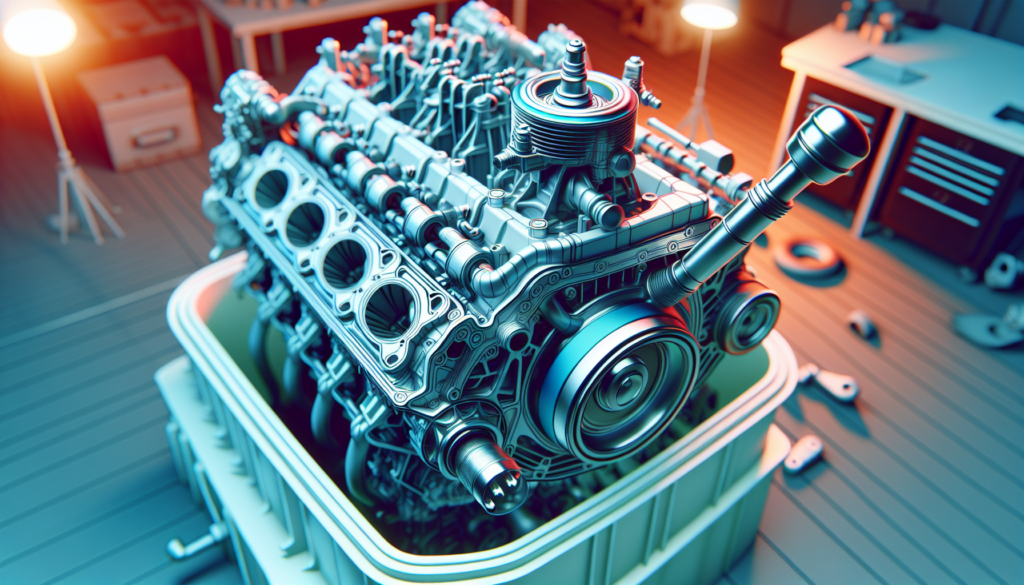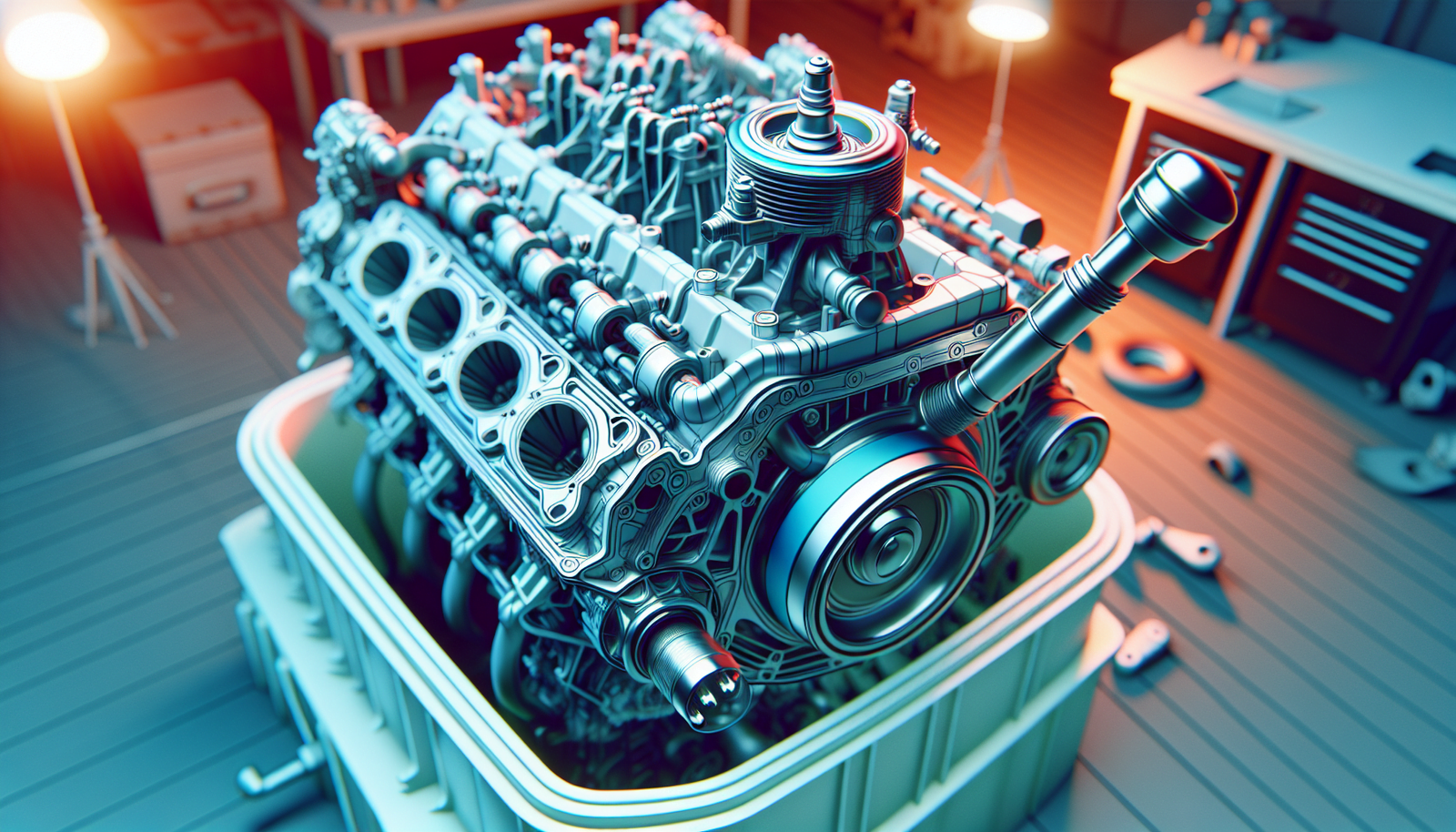Navigating the waters of boat engine thermostat troubleshooting and replacement may initially seem daunting, but don’t let that deter you. This piece promises to guide you every step of the way, simplifying complex concepts into helpful, digestible advice. Every breath of the salty sea air will remind you of the empowerment that comes from understanding your vessel and ensuring its smooth sailing. Get ready to explore some practical, easy-to-follow tips on how to diagnose potential thermostat issues and replace them on your own, saving you time, money, and unnecessary stress down the line. This is your informative journey into gaining control of your boat’s engine thermostat.

Understanding the Function of a Boat Engine Thermostat
The role of a thermostat in a boat engine
You might wonder, why is a thermostat necessary in a boat engine? The thermostat’s function is a crucial one: it maintains the engine’s optimum working temperature. The thermostat accomplishes this by regulating coolant that either acknowledges the heat from the engine, hence carrying it away, or concentrates heat within the engine when temperatures are too low. With the boat’s engine operating at a consistent and ideal temperature, the risk of overheating and consequential damage is significantly reduced.
How a thermostat works in regulating temperature
So, how does a thermostat regulate temperature in a boat engine? An operational thermostat stays closed when your engine is cold. In this state, it blocks coolant from circulating through the engine, allowing the engine to warm up more quickly. As the engine warms, the thermostat begins to open progressively, letting coolant pass through and maintain the engine at its optimal temperature. The thermostat achieves this by using a heat-reactive wax element that contracts and expands depending on the temperature. It’s an ingeniously simple device that can seriously influence how your boat engine performs.
Identifying Signs of a Faulty Boat Engine Thermostat
Warning signs indicating a problematic thermostat
Just like any device, a boat engine thermostat can develop faults over time. But how do you know if you’re dealing with a vulnerable thermostat? There are several warning signs that your boat engine’s thermostat may be faulty. Your engine may overheat or run colder than usual, which can be identified by a sudden drop or increase in the temperature gauge. You may also notice that your boat’s fuel efficiency has worsened. In some cases, the engine might not even start, a sign that there is no circulation of coolant due to a failed open or closed thermostat.
How to use temperature readings in identifying thermostat issues
Keeping a close eye on your boat’s temperature reading can help identify potential thermostat issues. The temperature gauge is usually located on the boat’s instrument panel. In a well-functioning engine, the thermostat should achieve a stable temperature reading after a few minutes of starting the engine. If the reading fluctuates extensively, it could indicate a problematic thermostat. It’s important to address these potential issues promptly to avoid further engine damage.
Tools Needed for Boat Engine Thermostat Troubleshooting
Essential tools for diagnosing thermostat problems
What tools should you have on hand when inspecting your boat’s thermostat? You’ll need a set of wrenches or socket set, a screwdriver, and a thermometer or digital infrared temperature gun. These basic tools will allow you to access, remove, and examine the thermostat.
How to correctly use each tool during troubleshooting
Now that you have your tools, it’s essential to know how to use each effectively. You’ll use the wrenches or socket set to loosen and remove bolts holding the thermostat housing in place. The screwdriver can help pry off the thermostat housing if needed. The temperature gun or thermometer is used to measure the temperature of the coolant or surrounding components to ensure they’re within the proper operation range.

Step-by-Step Troubleshooting of a Boat Engine Thermostat
Step-by-step process in diagnosing thermostat issues
To diagnose the thermostat, first, ensure the engine is cold to avoid burns. You’ll need to locate the thermostat housing, typically found on the engine block or cylinder head. Once you’ve found the housing and removed the bolts with your wrench or socket set, carefully lift off the housing and remove the thermostat. Ensure you take note of how the thermostat is placed for easy reinstallation. Once removed, you can inspect the thermostat for signs of damage, corrosion, or blockage.
Precautions to take when troubleshooting a boat engine thermostat
When working with a boat engine thermostat, safety should be your priority. Always ensure the engine has cooled down adequately before you start working on it to avoid burns. Don’t discard removed components carelessly, as small parts can easily get lost. If coolant is drained during the process, ensure that it is disposed of correctly to avoid potential environmental hazards.
Interpreting the Results of the Boat Engine Thermostat Troubleshooting
How to interpret thermostat test results
After examining the thermostat, how do you interpret what you’ve found? Visible damage, corrosion, or blockage are clear indicators that the thermostat may need replacing. If the thermostat is not opening or not fully opening when the engine is warmed up to its operating temperature, this is also a sign that it has failed and needs to be replaced.
What different results imply about the thermostat’s condition
When examining the thermostat, each potential flaw should tell you something. Corrosion or blockage may indicate a lack of routine maintenance, while a stuck thermostat suggests mechanical failure. Understanding these diagnostic indicators will guide your next line of action.
When to Replace a Boat Engine Thermostat
Situations that necessitate a thermostat replacement
Knowing when to replace a boat engine thermostat is crucial. If the thermostat is damaged, corroded, blocked, or not operating as expected, it’s likely time to replace it. If there are recurrent overheating problems despite maintenance works, that’s also an indication that the thermostat may need replacing. Notably, thermostats are not very costly items and are easier to replace than they are to repair.
Assessing whether repair or replacement is the best course of action
While some minor thermostat issues can potentially be resolved with cleaning or minor fixes, typically replacement is recommended. Thermostats are generally inexpensive and ensuring you have a functioning one is vital for your engine’s health, so it often makes more sense to replace a faulty thermostat.
Procuring a New Boat Engine Thermostat
Considerations in selecting a new thermostat
What should you look for when buying a new thermostat? Firstly, ensure that the thermostat is compatible with your boat’s engine model. It’s also good practice to stick with reliable brands trusted by the boating community. You might also want to consider whether you prefer a traditional wax-style thermostat or might want to upgrade to a digital one.
Where to purchase quality boat engine thermostats
You can purchase a new thermostat from a wide range of locations. Physical automotive parts stores, marine specialty stores, and online retailers all carry boat engine thermostats. If you’re uncertain about what to select, don’t hesitate to seek advice from marine or automotive professionals.
Tools Needed for Boat Engine Thermostat Replacement
Outline of tools needed for a thermostat replacement
When replacing your boat’s thermostat, the same tools used for troubleshooting are also required. You will need a set of wrenches or socket set, a screwdriver, and potentially a gasket scraper or knife if a gasket needs replacing. Additionally, you’ll need a replacement thermostat and new gasket, as well as a sealer or gasket compound.
The role of each tool in the thermostat replacement process
You will use the wrenches or socket set to remove the thermostat housing, while the screwdriver can pry the housing off if need be. The scraper or knife will be used to remove old gasket material from the housing and engine surfaces. The replacement thermostat and new gasket will be installed in place of the old parts, and the sealer or compound is used to ensure a tight seal between the gasket, thermostat housing, and engine.
Step-by-Step Replacement of a Boat Engine Thermostat
Detailed process of replacing a thermostat
Begin the thermostat replacement process with a cool engine to prevent burns. You’ll uncover the thermostat housing — just as when troubleshooting — and remove the old thermostat. Ensure that the old gasket material is thoroughly cleaned off from the housing and engine surfaces, and then install the new thermostat and gasket in the same orientation as the old one. After that, ensure the seal properly secures the thermostat housing back onto the engine.
Safety precautions to observe during thermostat replacement
As always, safety comes first. Don’t rush the replacement process as mistakes can lead to more significant problems. Always wait until the engine is cool before commencing work. Wear protective gloves to guard against potential injury while handling sharp tools or parts. Also, be very careful when working with gasket sealant—it can be harmful if it comes into contact with your skin, eyes, or if ingested.
Aftercare and Maintenance of a New Boat Engine Thermostat
Tips for caring for a new thermostat
After installing a new thermostat, routine inspections and maintenance will help prolong its lifespan. Regularly check for signs of corrosion or leaks and rectify any issues as they arise. Ensure that your boat’s coolant is maintained correctly and replaced at recommended intervals, as poor quality or old coolant can encourage build-up or corrosion.
Routine maintenance practices for a boat engine thermostat
Routine maintenance of a boat engine thermostat involves regular inspections, ensuring the coolant is clean and not depleted, and giving your engine a good run. By caring for your engine as a whole, you also care for its components, including the thermostat. Following these practices, you will not only enhance your boating experience, but you will also help prevent unexpected engine failures and expensive repairs.

